Dada Art: Meaninglessness of Beauty - Movements & Artists
As a movement that left a strong mark on the flow of art, Dada was not born to define, Dada was born to protest and kill the standards it wanted. But if projected according to the law of development: contradiction, decline, and birth, Dada opened up the reshaping of art and was equivalent to the definition of the meaninglessness of Beauty that has always been worshiped.
The Solid Throne of Beauty in Art
Beauty – a noun full of human desire, seems to have been closely associated with “art” since its beginning of being defined and named. In other words, “art is a specialized field in the production of Beauty". Through accumulation over time, its position is pushed high, sitting on a solid throne built by humans. Beauty is more multifaceted than we think, used as an adjective more than we think, and transformed into a philosophy, a concept we seek.
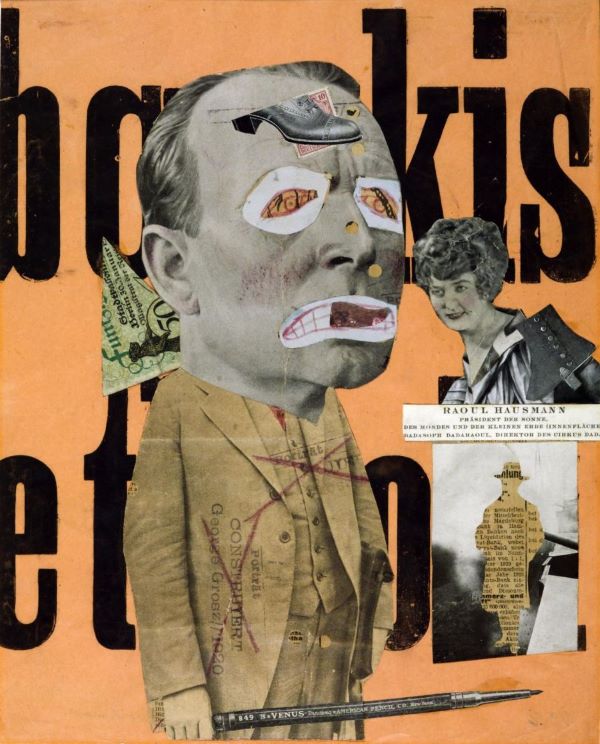
The work “The Art Critic” by Raoul Hausmann
In art, Beauty is always implicitly recognized as a standard, especially with the academic orthodox art that carries with it much more meticulous and strict standards with principles. Art is satisfied in the gentle embrace of Beauty, but sometimes that is a suffocating and meaningless siege for itself.
The Forced Abdication of Beauty and the Definition of Its Meaninglessness
Let’s go back a little bit to the past,
July 28, 1914 – November 11, 1918: World War I took place with the endless disputes between the Allied Powers (Britain, France, Russia, United States, Brazil) and the Central Powers (Germany, Austria-Hungary, Bulgaria, Ottoman), pushing the world to the abyss of recession and exhaustion.
February 8, 1916: Dada was born in the Cabaret Voltaire, a nightclub in Zurich founded by Hugo Ball and Emmy Hennings. This space became a hub for artists, poets, and intellectuals who were disillusioned by the war and the societal norms that they believed had led to such widespread destruction. The word "Dada" itself is often said to be a nonsensical term, chosen randomly by stabbing a knife into a dictionary, emphasizing the movement’s embrace of the absurd and irrational. However, "Dada" also means "hobby horse" in French, reflecting the movement's playful, childlike rejection of seriousness.
The upheavals of history always have a profound impact and can change the flow of art. During World War I, Beauty existed as a flashy stage with a cumbersome frame amid a chaotic and ruined world. Of course, there are still audiences who are loyal to the beautiful old dreams. But some are tired and “crazy” because of the absurd and meaningless brilliant models in the dark and chaotic reality of the era. And Dada was born from that group of “crazy” people.
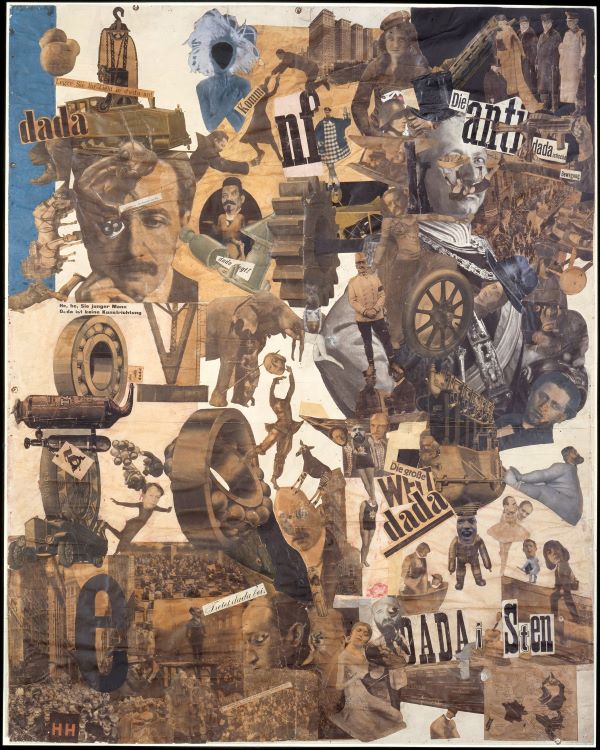
The work “Cut with a Kitchen Knife Dada through the Last Weimar Beer Belly Cultural Epoch of Germany” (1919) by Hannah Höch.
Dada destroyed and condemned the subtle, elegant, sweet beauty so that art became crazy, lost its master, and let all the potential of humans rise up and run wild. Art returns to each individual, no longer being forced by anyone or any set of standards. Art is the crystallization of humans, belonging to humans, facing loss, life, and death. The effect of Beauty is also reversed to its original point.
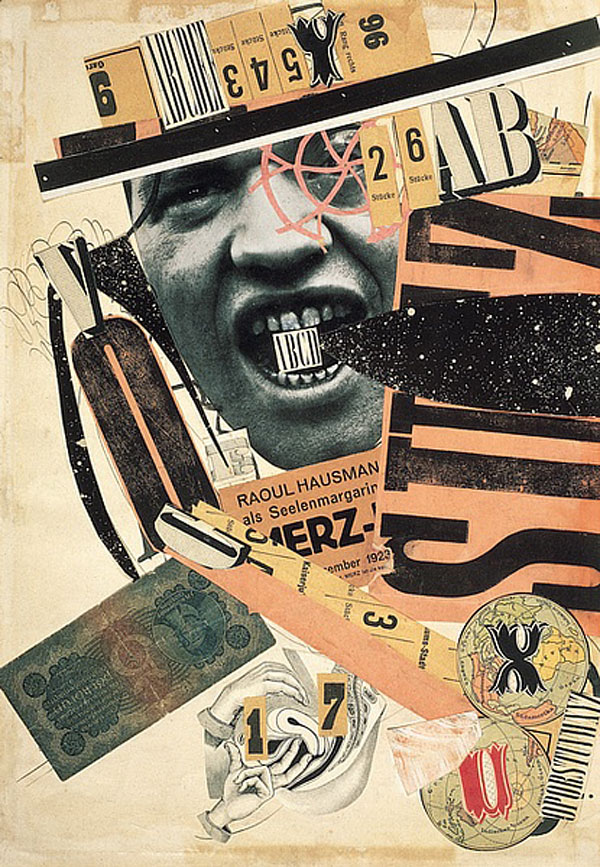
"ABCD" by Raoul Hausmann
In fact, Dada was not only limited to the scope of art. Its dramatic anger poured out all aspects of contemporary culture, politics, society, and ideology – things that were used to propagate and paint justice and peace for meaningless wars. Dada with Hugo Ball, Emmy Hennings, Jean Arp, Raoul Hausmann, etc. is exiled and uncertain by war, was a combination of broken faith in the brilliant Western civilization, in the whole society under the hands of aggressive rulers and of skepticism about the inherent values of art. In the eyes of their contemporaries, they were just people who cried, were unstable, and were infamous for self-created things that were named art, which were equally difficult to understand, extreme, and mixed.
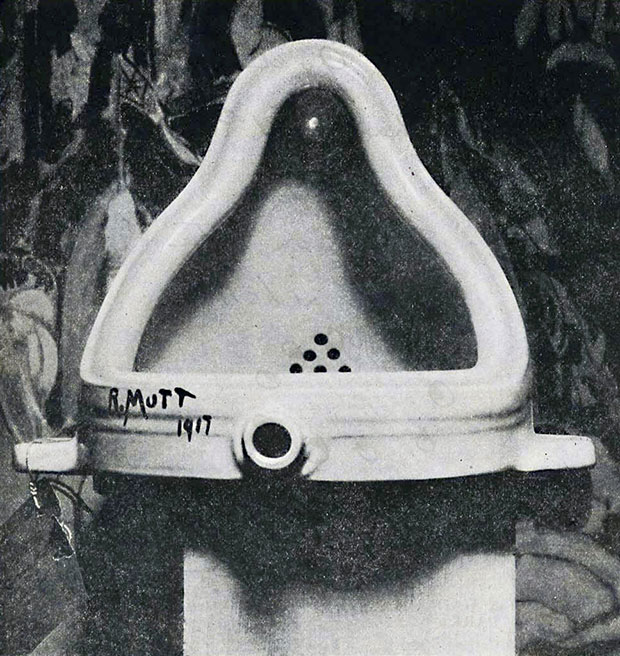
The whole traditional classical art was stunned by “Fountain” (1917) – a humorous challenge by Marcel Duchamp. The readymade – industrial production, abundant in everyday life, knocked on the door of art with a haughty smirk.
Dada extended beyond visual art into the realm of performance. At the Cabaret Voltaire and other venues, Dadaists performed sound poems, nonsensical skits, and spontaneous happenings that defied conventional theater. Hugo Ball’s Karawane (1916), a sound poem composed of invented words, is an example of how Dada performances aimed to dismantle language and communication itself.
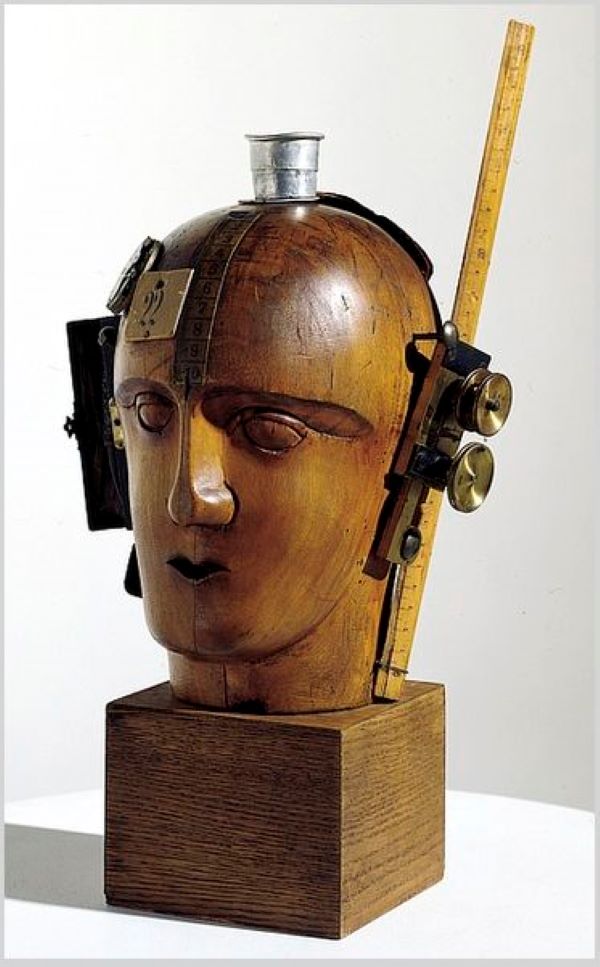
Spirit of Our Time by Raoul Hausmann
Or “Spirit of Our Time” (1920) – a sculpture that gathered broken pieces of objects for Raoul Hausmann to mock the provisional German government with people “no longer capable of exploitation, empty-headed.” Randomly collected materials, messy combinations, instincts, without desire, even overthrowing the aesthetic standards that created the disorder and ambiguity for a movement that spread throughout Europe. Beauty laments and cries out in the face of Dada’s endless joke, because its position and power are completely ineffective against people full of resistance and extremism.
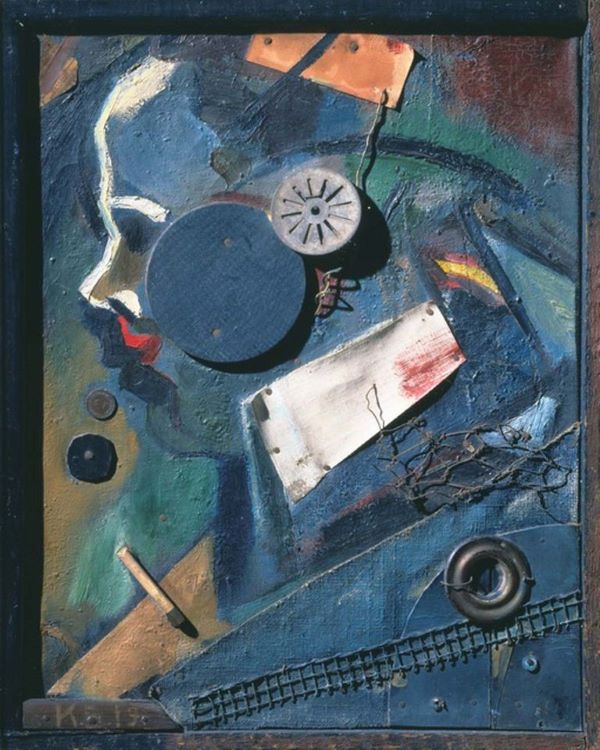
Merzbild 1A (The Psychiatrist) (1919) by Kurt Schwitters,
Dada was not born to define but to rebel and erase the standards it wanted. Of course, according to the law of natural development: contradiction, decay, and birth, Dada is also equivalent to a new definition of the meaninglessness of all things in the world, denying Beauty.
“Art must be unaesthetic in the infinite, useless, and without any way to justify.” – Dada Manifesto in 1918.
Democracy in Art
The birth of Dada was a protest and resistance to the standards of Beauty that had been molded through many brilliant periods of human life. When tired of the standards, amidst the chaos and turmoil of the contemporary, Dada arose to redefine the way people should treat art. Like a mirror reflecting and overturning everything, the Beauty that is the destination of art is pitifully despised, despised, and pushed to the bottom of the scale.
The anger of nearly 100 years of Dada has gradually receded and been soothed by the better situation of the world, but the power of Beauty has hardly returned as before. The skepticism about the meaninglessness of Beauty has expanded the scope of art and also shaken the ideas and artistic values that have long reinforced Beauty.
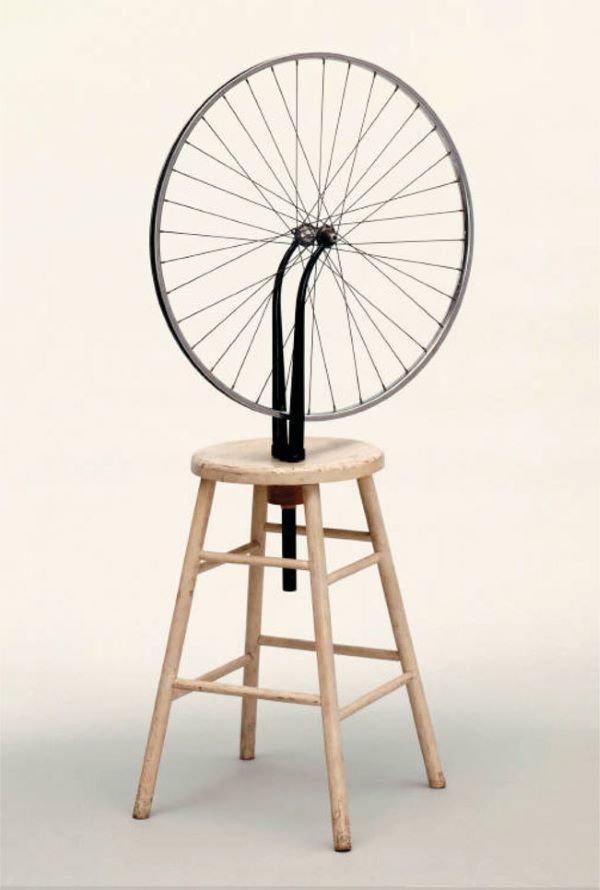
Bicycle Wheel, 1913 by Marcel Duchamp
Art leaves Beauty far behind, closer to the Concept and the human ego. Good, because it gives people freedom and confidence when struggling with the sacred land of art. An unprecedented democracy. Art began to spark other perspectives, not an old habit of standards, becoming tolerant when beginning to accommodate innovations, strangeness, and other details. But then a question began to appear, challenging both artists and art lovers, a series of persistent skeptical echoes, perhaps unable to know the end of the echo:
“Yes, this is art? But how can this not be art?”
Artists of the Dada Art Movement
These influential artists shaped the Dada art movement, pushing the boundaries of creativity and redefining the concept of art through their unconventional works.
Marcel Duchamp (1887 - 1968)
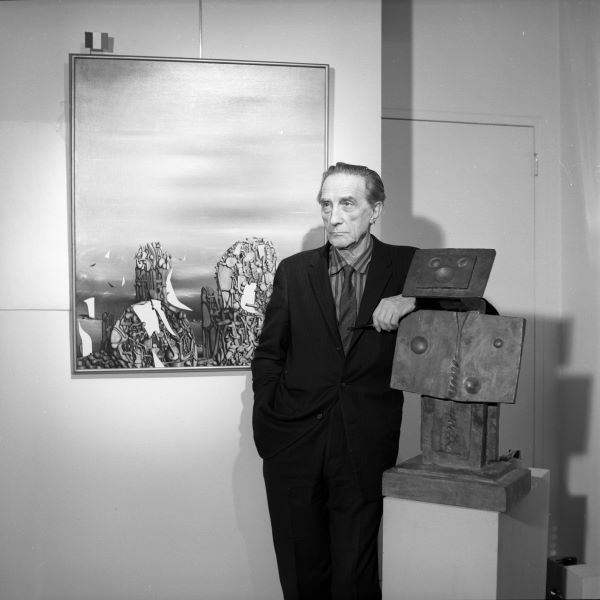
Marcel Duchamp was a pivotal figure in the 20th-century art world, known for his groundbreaking approach that challenged traditional art concepts. Born in France in 1887, Duchamp initially worked in the styles of Impressionism and Cubism but quickly moved beyond these conventions.
Duchamp is best known for creating readymade—ordinary, manufactured objects that he selected and designated as art. His most famous readymade is Fountain (1917), a porcelain urinal signed "R. Mutt," which questioned the very definition of art and the role of the artist. This work, along with others like Bicycle Wheel (1913) and L.H.O.O.Q. (1919), where he altered a postcard of the Mona Lisa, embodied the Dada movement's spirit of irony, rebellion, and the rejection of traditional aesthetics.
Beyond his readymade, Duchamp's influence extended to his exploration of chance and conceptual art. His piece 3 Standard Stoppages (1913-1914), where he dropped three threads from a meter height and mounted the resulting shapes, exemplifies his interest in the random nature of measurements.
His work emphasized the idea that the concept behind a piece of art could be more important than the art object itself, a notion that continues to resonate in contemporary art practices.
Hannah Höch (1889 - 1978)
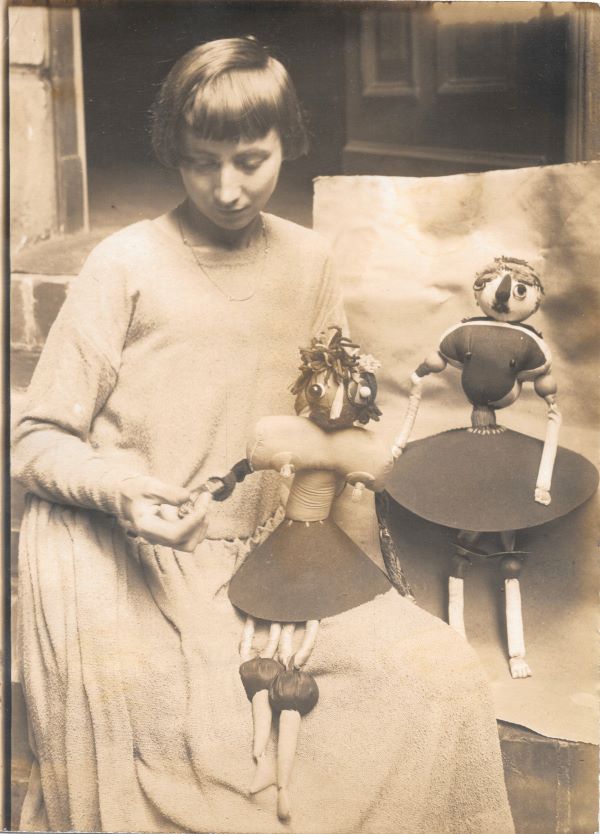
Born in 1889 in Gotha, Germany, Hannah Höch was one of the few women associated with the Dadaists.
Höch's most significant contribution to the Dada movement was her development of photomontage, a technique of cutting and rearranging photographs from mass media to create new, often surreal compositions. Her work critiqued political, social, and cultural issues of her time, including the role of women in society, the rise of mass media, and the absurdity of war.
One of her most famous works, Cut with the Kitchen Knife Dada through the Last Weimar Beer-Belly Cultural Epoch of Germany (1919-1920), is a powerful collage that juxtaposes images of industrial machinery, political figures, and cultural icons. This piece not only captures the chaos and fragmentation of post-war Germany but also challenges the traditional roles assigned to women, symbolized by the domestic "kitchen knife" in the title.
Höch’s art often addressed issues of gender and identity, making her a proto-feminist artist ahead of her time. She explored themes of androgyny and the fluidity of gender, questioning societal norms and expectations. Her series From an Ethnographic Museum (1924-1930) further showcased her interest in these themes, where she combined images of women with those of non-European artifacts, critiquing colonialism and the exoticization of other cultures.
Despite her significant contributions, Höch was often marginalized within the male-dominated Dada movement. However, her work has gained increasing recognition over the years, particularly for its incisive social commentary and its role in advancing the medium of photomontage.
Tristan Tzara (1896 - 1963)
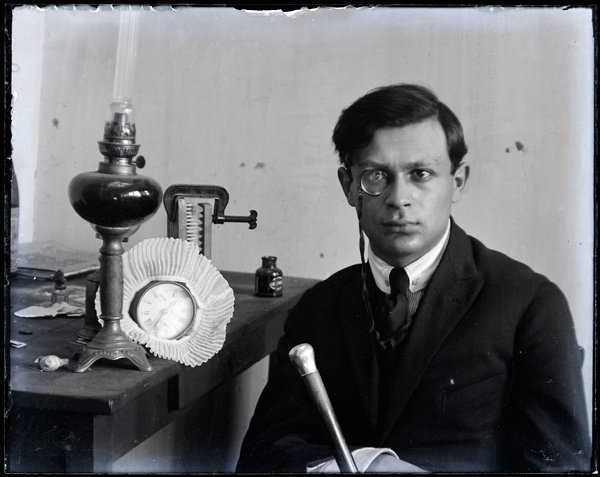
Tristan Tzara was a key instigator of Dada's rebellious, anti-establishment ethos, using his work to challenge conventional notions of art, culture, and politics.
Tzara’s Dada Manifesto 1918 is one of his most famous writings, where he declares, "Dada means nothing," encapsulating the movement's embrace of meaninglessness and chaos as a form of protest against a world that seemed equally senseless. The manifesto, with its disjointed, provocative language, exemplified Dada's mission to disrupt and defy rational thought, logic, and the established norms of art and society.
In the 1920s, Tzara moved to Paris and continued to influence the avant-garde scene, eventually becoming associated with the Surrealists. However, his relationship with the Surrealist group was complex, and he eventually distanced himself from them.
Tristan Tzara’s influence extends beyond Dada, as he helped lay the groundwork for later avant-garde movements, such as Surrealism and Fluxus. His radical ideas about art, creativity, and society expanded the possibilities of artistic expression, making him a crucial figure in the development of modern and contemporary art.
Enhance your expertise with Skilltrans through their curated selection of related courses. Please click on the course name below to learn more:
Cartoon Drawing For Absolute Beginners
You will learn how to draw cute cartoon characters. Also, you will learn how to draw simple cartoon backgrounds. We’ll start with the basics. For example whats the anatomy of our cute cartoon characters and what shapes we’ll use to draw them. Then we’ll jump into different facial expressions so that you can express emotion with your characters. Also different hairstyles, a lot of practice sheets, and many more.
Drawing and Colouring: Birds and Flowers (Art as Meditation)
Nature influences art in many we can't imagine art without nature. As it is the source of inspiration for every artist, its the best way to start learning art through nature. Its a kind of meditation in which we relate ourselves with the beauty of nature. When you indulge yourself in activities related to nature you feel calm and relaxed.
In this course you will learn to make beautiful leaves, flowers and exotic and beautiful birds which will not only enhance your painting.
Character Art School: Complete Coloring and Painting
Character Art School is a 6 week learn-anywhere video course where you learn to become adept at coloring and painting professional characters. I’ve hand-crafted the Character Art School: Complete Coloring and Painting course to be the only course you need, to learn all the core fundamentals and advanced techniques to coloring and painting characters well. If you’re an absolute beginner or you’re already at an intermediate level, the course will advance your current ability to a professional level. The course is a comprehensive 5 module guided video course, where the only limit to your progression is your determination and engagement in the rewarding assignments.
Conclusion
In contemporary art, the legacy of Dada can be seen in the continued questioning of traditional artistic values, the embrace of absurdity and chance, or the use of unconventional materials and methods. Dada remains a powerful reminder of the potential for art to challenge and subvert societal norms.
If you desire to explore art and learn how to create it, you can register for Skilltrans courses today.

Meet Hoang Duyen, an experienced SEO Specialist with a proven track record in driving organic growth and boosting online visibility. She has honed her skills in keyword research, on-page optimization, and technical SEO. Her expertise lies in crafting data-driven strategies that not only improve search engine rankings but also deliver tangible results for businesses.



